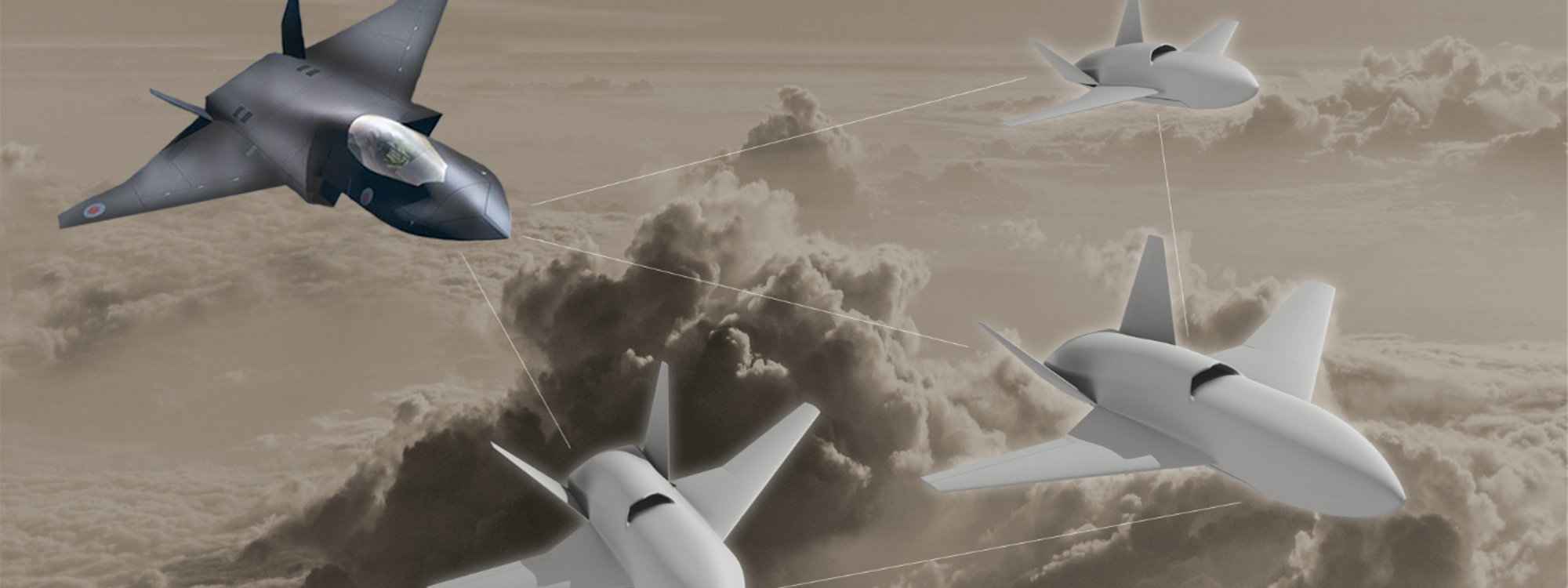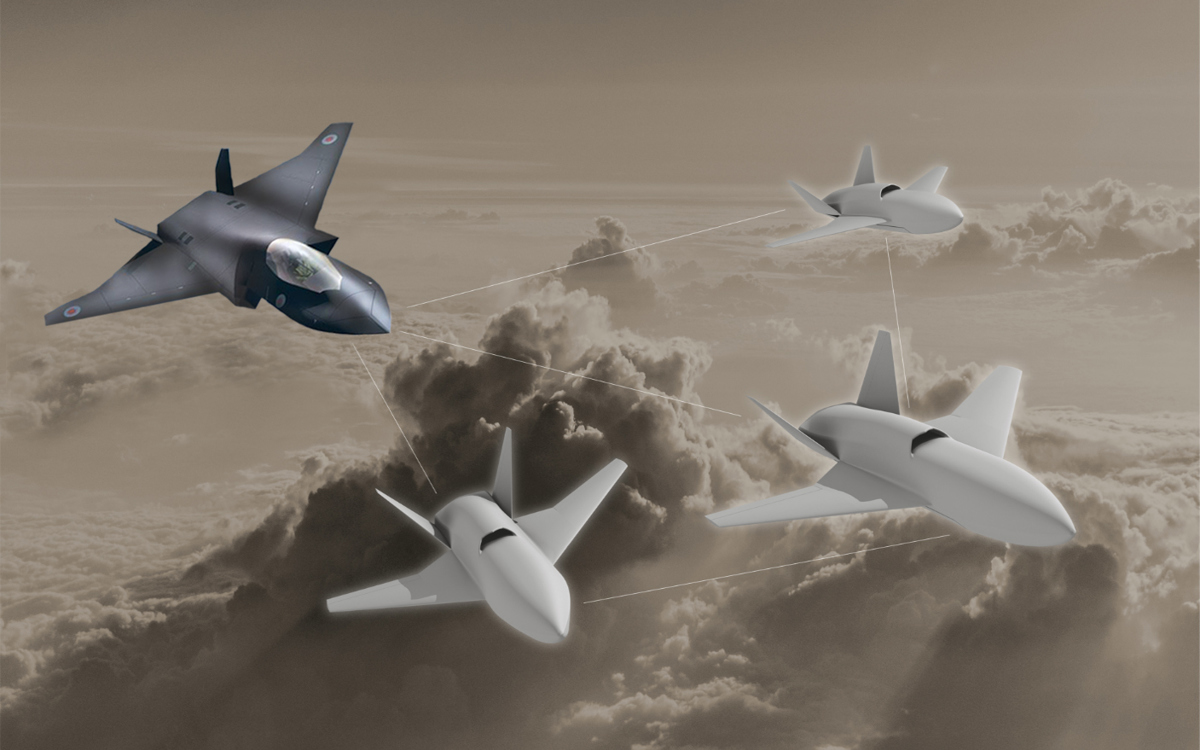
Designing the next generation of superior combat aircraft structures
NCC and the Defence Science Technology Laboratory (Dstl) collaborate on the latest technologies for the next generation of lightweight, strong and resilient combat aircraft composite structures.
The Advanced Design of Composites Structures for future Combat Aircraft (ADCoSCA) programme
Background
The UK defence sector is a driving force in research and development. Through technology innovation, it supports the armed forces to meet the changing demands of modern-day combat, so they are best able to defend our national security interests, protect citizens, and safeguard our prosperity.
The sector is investing in advanced research across a range of potential combat aircraft concepts spanning next-generation crewed combat aircraft, un-crewed vehicles, and the associated range of product development and certification approaches.
Composites have a critical role to play here, as they do across modern society, to make objects lighter and stronger, with increased damage tolerance – and which also reduce their carbon footprint. For example, high performance vehicles, such as modern fighter jets and Formula 1 cars are made from 80% composite materials (by volume), but this equates to 40% of the total weight for a jet and just 25% of the total weight for a Formula 1 car. Whilst huge advances have been made in the application of composites, the technology still has more to offer.
Challenge
Developing the next generation of combat aircraft requires improved manufacturing efficiency to reduce life-cycle costs, whilst producing strong, durable, lightweight and safe aircraft that use less fuel, thereby reducing their CO2 emissions.
Composites can help unlock these capabilities. In 2020, NCC and Dstl launched a two-year £1.4 million Advanced Design of Composites Structures for future Combat Aircraft (ADCoSCA) programme to develop novel and transformational ideas for airframe design concepts.
The programme involved developing design concepts through space trade studies (e.g. structural performance vs. complexity vs. mass), alongside work to identify and provide mitigation against specific features that constrain mechanical performance and have a high associated cost.
The programme
Led by a joint NCC and Dstl steering group working with BAE Systems and QinetiQ, the first year of the ADCoSCA programme included a forensic State of the Art review to identify the key characteristics that drive overarching aircraft structures, the potential technologies that may be of interest, and the organisations with an interest and capabilities in these technologies. BAE Systems and QinetiQ also delivered comprehensive knowledge studies to support the programme’s understanding.
During ADCoSCA’s second year, the NCC, QinetiQ and Morson Projects developed the design trade studies and produced initial airframe design concepts.
NCC undertook the following studies:
- Unitised structures – generating a list of concepts for novel design and
manufacturing solutions that would facilitate integration and unitisation of
generic air frame sub-structures and skins for use in crewed and un-crewed
air vehicles - Thermoplastics – investigating thermoplastic manufacturing to increase toughness, damage-resistance and damage-tolerance, offering major advantages in performance
- Fairings – investigating the concepts for novel design solutions for structural, semi-structural and non-structural aero panels used in crewed and uncrewed air vehicles
Results
With the support of the ADCoSCA community, the NCC and Morson Projects developed a ‘Tree of Options’, which collated and graphically presented the design trades applicable to a concept airframe. Technical information that will help inform the Ministry of Defence of suitable directions for future research into an airframe design.
NCC also developed a roadmap for future ADCoSCA work programmes, which sets out a clear direction for the continuation of the work across a broad range of subjects.
Impact and next steps
Through work on materials technologies, structural concepts and manufacturing concepts, this initial phase has provided a foundation, and a vision for further work.
Dstl’s aspiration is to take a number of promising initial design options into a follow-on programme; subject to contract. This could include a wider range of aircraft concepts, further optimisation and down-selection of technologies and the provision of high-fidelity worked examples of world-class integrated airframe-designs.
The research findings and the range of design options developed have scope to influence current and future programmes, such as GCAP (Global Combat Air Programme) and FCAS (Future Combat Air System).

